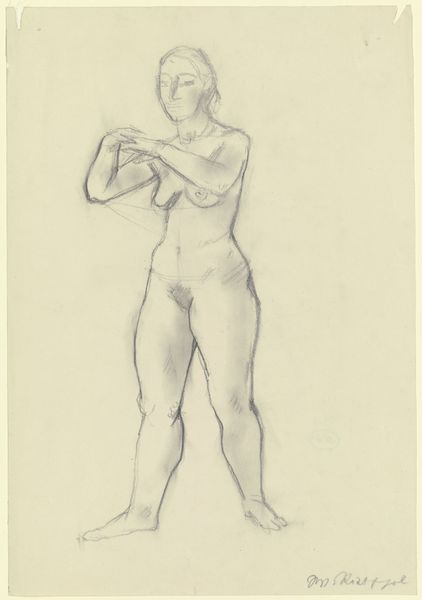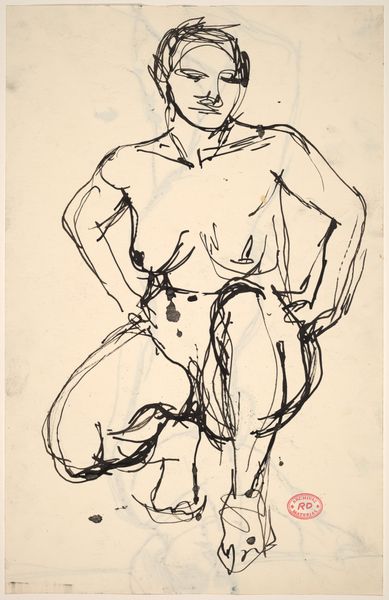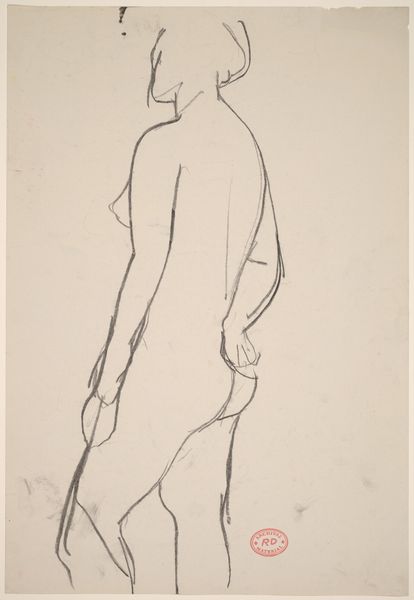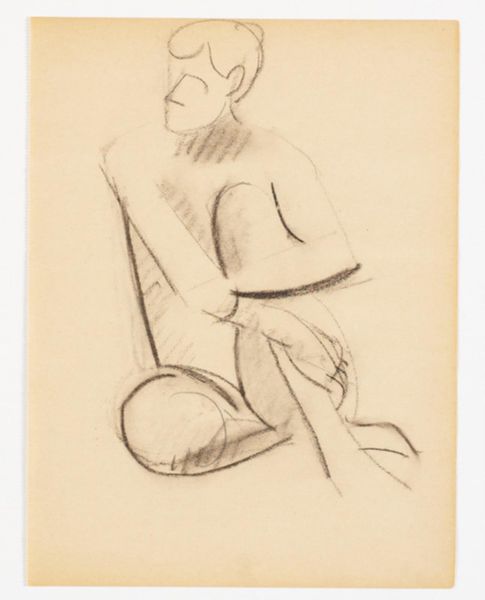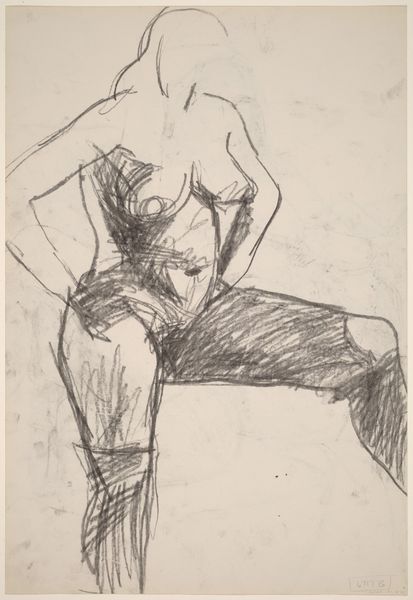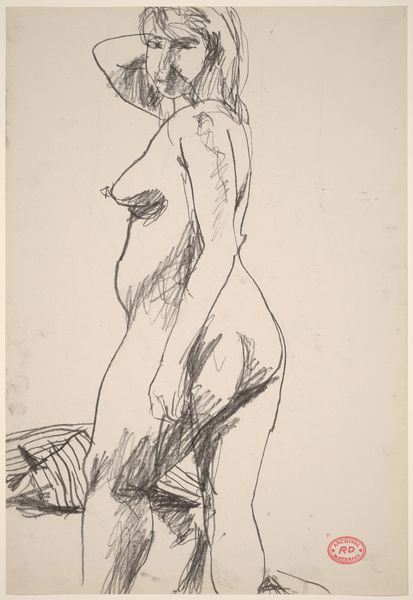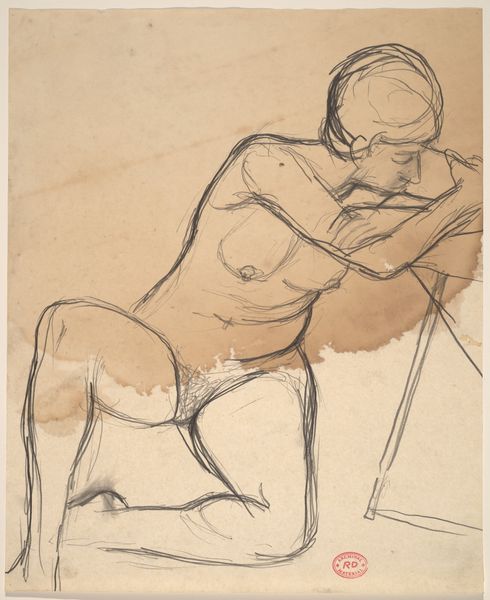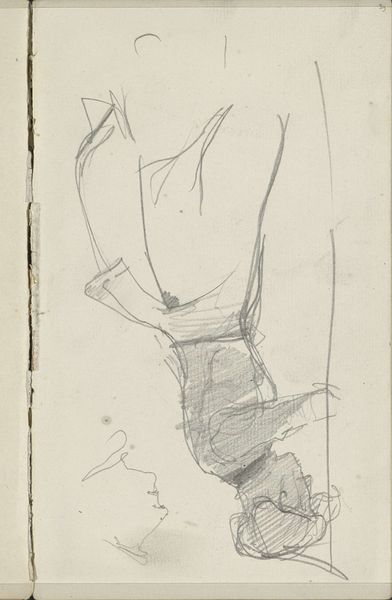![Untitled [seated nude with her left foot retracted onto stool seat] [verso] by Richard Diebenkorn](/_next/image?url=https%3A%2F%2Fd2w8kbdekdi1gv.cloudfront.net%2FeyJidWNrZXQiOiAiYXJ0ZXJhLWltYWdlcy1idWNrZXQiLCAia2V5IjogImFydHdvcmtzLzg2MTVlY2MxLWNiNDItNGM2Yy1iOGE1LWZlZDQ4ZWUxNjM2My84NjE1ZWNjMS1jYjQyLTRjNmMtYjhhNS1mZWQ0OGVlMTYzNjNfZnVsbC5qcGciLCAiZWRpdHMiOiB7InJlc2l6ZSI6IHsid2lkdGgiOiAxOTIwLCAiaGVpZ2h0IjogMTkyMCwgImZpdCI6ICJpbnNpZGUifX19&w=3840&q=75)
Untitled [seated nude with her left foot retracted onto stool seat] [verso] 1955 - 1967
0:00
0:00
drawing, pencil
#
drawing
#
figuration
#
bay-area-figurative-movement
#
pencil
#
nude
Dimensions: overall: 43.2 x 35.6 cm (17 x 14 in.)
Copyright: National Gallery of Art: CC0 1.0
Editor: Here we have Richard Diebenkorn's "Untitled [seated nude with her left foot retracted onto stool seat] [verso]," created sometime between 1955 and 1967. It's a pencil drawing, a study of the human form. It feels very raw and immediate to me. What do you make of this piece? Curator: I see it as Diebenkorn engaging in a long art-historical dialogue with the tradition of the nude, and simultaneously questioning it. How does this relate to shifting cultural views on the body and representation at the time, particularly during the post-war period? It almost feels like an attempt to strip away the traditional, idealized representation of the nude. Editor: You're right, it’s like he's more interested in the process and form rather than a finished ideal. What about those loose, almost frantic lines that don't quite define the form? Curator: Those lines challenge the idea of a fixed image. Think about how mid-century abstraction was gaining traction, questioning traditional academic approaches. This piece can be viewed as an intimate negotiation between the artist and his subject, rendered in public view for later audiences. The 'unfinished' quality may represent his evolving and subjective perception. Editor: So, it is as much about Diebenkorn grappling with representation as it is about the figure itself? Curator: Precisely. And who gets to look at the body and under what conditions is always pertinent, as the drawing's journey into the gallery makes evident. Where do we position such intimate work within our institutions? Editor: That gives me a whole new perspective. I was so focused on the simplicity, I overlooked the layers of context and social meaning embedded within the work. Curator: It’s a drawing that invites us to think about how art both reflects and shapes our cultural values.
Comments
No comments
Be the first to comment and join the conversation on the ultimate creative platform.
